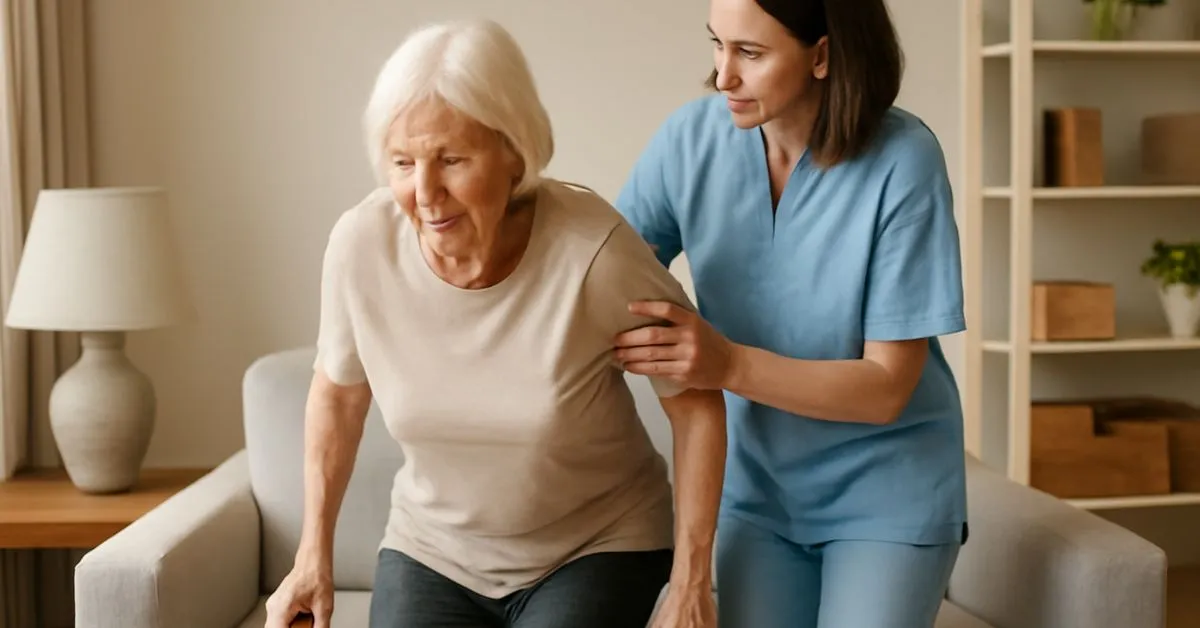HEALTH AND FITNESS
Mobility-Friendly Routines for Healthy Ageing

Mobility plays a crucial role in maintaining independence and quality of life as people age. For caregivers, aged care professionals, and health-conscious older adults, building the right daily routines can reduce fall risk, preserve physical function, and support confident movement.
These mobility-friendly routines are practical, safe, and adaptable. When performed consistently and with supervision, they help older adults stay active, capable, and engaged in everyday tasks.
Stretch Major Joints Daily
Daily stretching supports flexibility and reduces stiffness in commonly affected areas like hips, shoulders, neck, and ankles. Supervised sessions of five to ten minutes should include slow, controlled movements, such as overhead reaches, ankle circles, and shoulder rolls, to maintain range of motion and prepare the body for daily activity.
Where mobility is limited, supported stretches using stable furniture or assistive devices can help. Providers like Safety and Mobility offer solutions that make stretching safer, especially for those recovering from injury or living with chronic conditions.
Perform Sit-to-Stands Repeatedly
Sit-to-stands are simple yet effective for strengthening muscles used in standing, sitting, and transferring. With supervision, older adults can practise rising from a sturdy chair and sitting back down slowly. Two sets of ten repetitions each day can improve lower-body strength and stability.
This routine is especially valuable in care settings, where functional independence is key. Carers should ensure proper technique and offer physical or verbal support if needed to promote safety and consistency.
Include Supported Balance Exercises
Balance routines help reduce the risk of falls and should be incorporated into daily care plans. A basic activity involves standing on one leg while holding onto a chair for support, switching sides after 10–20 seconds. Another is heel-to-toe walking along a hallway to improve coordination and proprioception.
These exercises require close supervision to prevent accidents. In residential or home care, they can be delivered as part of a fall-prevention programme and tailored to individual ability levels.
Walk With Purpose
Walking remains one of the most effective low-impact exercises for older adults. Structured walks, either indoors or outdoors, improve circulation, joint health, and coordination. Sessions of 10 to 15 minutes, once or twice daily, provide measurable benefits.
Carers should assess whether walking aids are needed and monitor posture, pace, and fatigue. Including walking as part of a daily routine helps maintain functional independence and supports overall health.
Engage in Seated Leg and Arm Strengthening
Seated exercises allow older adults with limited endurance or balance to build strength safely. Leg extensions and bicep curls using light weights are ideal for daily practice.
These routines can be done individually or in small group settings with guidance from caregivers. They support strength needed for daily tasks such as lifting, reaching, and transferring, without placing strain on joints.
Practise Functional Movements
Movements that mirror real-life activities help reinforce coordination and prepare the body for everyday tasks. Practising high-knee lifts in place, reaching overhead, or pulling resistance bands mimics stepping, dressing, and lifting motions.
Such routines build familiarity with physical patterns used throughout the day. Whether integrated into occupational therapy sessions or caregiver-led exercises, functional movements improve both confidence and capability.
Be Consistent and Adjust to Ability
Consistency is essential for long-term mobility outcomes. Performing these routines daily, at a suitable time and pace, helps build strength and stability over time. Tracking progress ensures that activities remain aligned with the individual’s needs.
All routines should be adjusted based on ability, health status, and comfort. With proper support, they offer a sustainable path to healthy ageing, preserving dignity, safety, and physical independence for years to come.
-

 GENERAL5 months ago
GENERAL5 months agoChristofle – For Those Who Dream of Family Heirloom Silver
-

 SPORTS7 months ago
SPORTS7 months agoDiscover the World of Football with Streameast: Watch Your Favorite Leagues and Tournaments
-

 GENERAL4 months ago
GENERAL4 months agoUncovering the World of кинокрадко: The Dark Side of Film Piracy
-

 GENERAL2 months ago
GENERAL2 months agoATFBooru: Anime, Gaming, and Subculture Imageboard

























